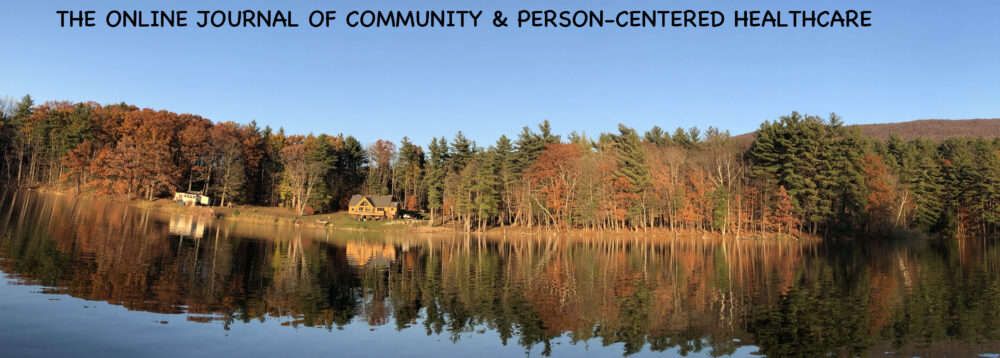Rhinophyma in “Old Man with a Young Boy”
Ariana Shaari, Barnard College, Columbia University
New York City, New York
Ariana Shaari is a senior at Barnard College, Columbia University majoring in Psychology. Her love of literature and art history fuels her pursuit of a career in medicine.
201-820-7068 email: als2287@barnard.edu
The unshakeable eye contact, hand placement, and emotional sensitivity between the two figures in Domenico Ghirlandaio’s “Old Man with a Young Boy”1 suggests an affection so strong that art historians assumed it to be a portrait between grandson and grandfather without actual evidence of this relationship. At the time of the painting’s genesis in 15th century Florence, Ghirlandaio was commissioned to both realistically depict the sitter and emphasize his unique qualities.
The resulting painting exemplifies Ghirlandaio’s ability to create lifelike figures, noted especially in his execution of the old man’s nose. My gaze was almost immediately drawn to its forbidding warts, a stark contrast to the young boy’s shining locks, the delicate fur lining the robe, and the rolling hills in the background. I could not help but view him as both grandfather and patient. Rosacea, untreatable in the 15th Century, most likely led to the development of his rhinophyma, a benign, unsightly aesthetic blemish marking the end stage of rosacea. Rhinophyma is characterized by thickening of nasal skin that eventually leads to a disfiguring nasal hypertrophy, most commonly seen in middle-aged to elderly men.3 In addition to the significant cosmetic deformity, the disorder can have great physiological consequences, such as blocking of the nasal cavity and obstructive sleep apnea.4 Rhinophyma has also been found to coexist with squamous cell carcinoma in some cases, adding another layer of complication in diagnosis and treatment.5
As with all illnesses, rhinophyma can have a profound psychological impact on the patient and may affect the way society views him or her. Firstly, disfigurement worsens over time, which can be a major cause of self-consciousness and anxiety. Patients may feel ashamed about their appearance, sometimes to the extent of social reclusion.6 Moreover, rhinophymas have been a source of negative stigmatization. In the past, having rhinophyma was considered a sign of alcoholism, contributing to the name “whiskey nose” or “rum nose”.7
Considering the cultural meanings of deformity during Ghirlandaio’s time leads to a different layer of appreciation of the work. Before the painting’s conception during the earlier years of the Renaissance, physical deformities were viewed as a marker of inner evil or sinful behavior.8 However, by the time Ghirlandaio finished the painting in 1490, a fundamental shift had occurred that emphasized humanism in art, elevating the importance of Man and celebrating his natural features.9 Ghirlandaio adheres to this cultural transition. The emphasis of the deformity is lessened when considering it in the context of the strong emotional component with the grandson. Despite the fact that patients with stigmatized disorders may feel shame in response to the reactions of the family members around them, Ghirlandaio highlights a beautiful moment between grandfather and grandson, between patient and family.10 The grandson’s wide eyes and tender hand placement speak to his adoring love for his grandfather.
While the painting’s aesthetic achievements have been rightly celebrated, I believe the painting is memorable, and relevant to medicine today, for its meaning beyond the superficial. The delicate depiction of love reminds me of the privilege of having a social support network in the face of illness. The painting can be used as a teaching moment and as a reminder of the necessity of empathy and sensitivity when caring for the individual; not just for the patient’s disorder. Moreover, Ghirlandaio’s appreciation for the human form is a permanent testament to the beauty found in the raw and imperfect. The connection between the two figures is a reminder as well to the necessity of considering each individual within a unique psychosocial unit. How would the viewer interpret the disease if Ghirlandaio had depicted the elderly man alone? What if the elderly man had a spiteful demeanor? These are questions that the viewer is left to grapple with, especially in relation to modern discussions about stigmatized disorders.
References
- Kleinman, Arthur. The Illness Narratives: Suffering, Healing, and the Human Condition. Basic Books, A Member of the Perseus Books Group, 2007.
- Kim, Min Joo, Hye Sung Kim, Young Min Park, and Hyung Ok Kim. “Squamous Cell Carcinoma Masquerading as Rhinophyma.” Ann Dermatol21, no. 1 (November 1, 2009): 81–83. https://doi.org/https://www.ncbi.nlm.nih.gov/pmc/articles/PMC2883379/pdf/ad-21-81.pdf.
- Koepsell, Thomas. “An Old Man and His Grandson (Ca 1480-1490).” Archives of Pediatric and Adolescent Medicine, vol. 156, Oct. 2002, p. 966., faculty.washington.edu/koepsell/ArtCoverCommentaries/Commentaries/Ghirlandaio.pdf
- Marcasciano, Marco, et al. “Rhinophyma: ‘‘Less Is More’’ and ‘‘Old Is Gold.’’” Aesth Plast Surg, 23 Dec. 2016, pp. 232–233., doi:10.1007/s00266-016-0722-x.
- “Old Man with a Young Boy.” Digital image. https://www.louvre.fr/en/oeuvre-notices/old-man-young-boy.
- “Old Man with a Young Boy (1490).” Old Man with a Young Boy, Domenico Ghirlandaio: Analysis, www.visual-arts-cork.com/famous-paintings/old-man-with-young-boy.htm.
- R Kassir, J Gilbreath, A Sajjadian. Combination Surgical Excision and Fractional Carbon Dioxide Laser for Treatment of Rhinophyma. Word J Plast Surg 2012;1(1):36-40.

